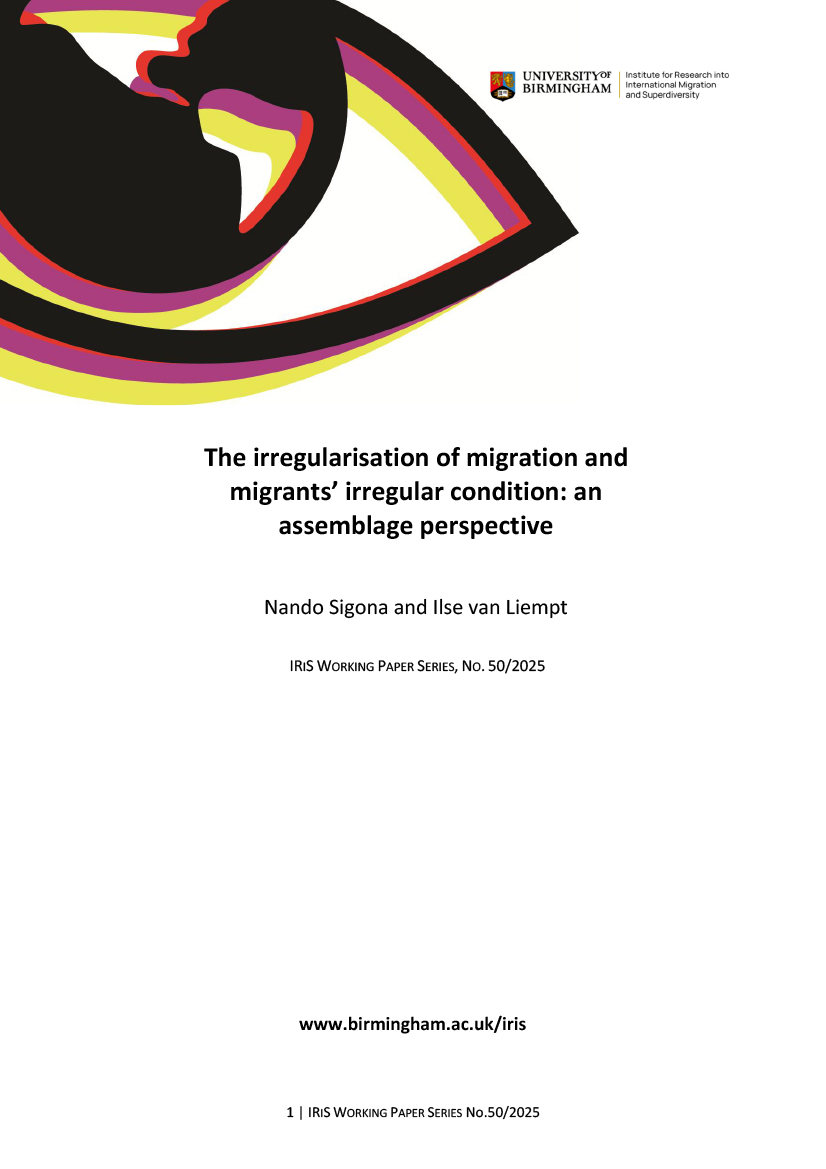The irregularisation of migration and migrants’ irregular condition: an assemblage perspective
Nando Sigona and Ilse van Liempt
How to cite:
Sigona, N. and van Liempt, I. (2025) ‘The irregularisation of migration and migrants’ irregular condition:
an assemblage perspective’, IRIS Working Paper Series, no. 50/2025, Birmingham: University of Birmingham
The irregularisation of migration and migrants’ irregular condition: an assemblage perspective
Nando Sigona and Ilse van Liempt
This IRIS Working Paper develops the concept of irregularity assemblage to account for the heterogeneous, dynamic, and relational processes through which migrant irregularity is produced, sustained, and contested across Europe. Drawing on insights from critical migration and border studies, assemblage theory, and feminist and postcolonial scholarship, we argue that irregularity is not a fixed legal category but an emergent condition generated through the intersection of multiple regulatory, material, and discursive regimes. Building on comparative evidence from six European countries (Finland, Germany, Italy, the Netherlands, Poland, and the United Kingdom) and at the EU level, the paper traces how immigration, labour, and welfare systems, together with local bureaucratic practices and public narratives, co-produce diverse configurations of irregularity. We show that these assemblages are historically and spatially contingent, shaped by crises and reforms—from the “hostile environment” in the UK to the “Cutro Decree” in Italy and the post-2015 securitisation of borders in the EU. The concept of irregularity assemblage foregrounds the relational entanglements between law, governance, and everyday life, illuminating how migrants and their families navigate, resist, and sometimes reproduce the very infrastructures that render them precarious. By re-centring irregularity as a process rather than a status, the paper contributes to a reconceptualisation of irregular migration beyond juridical or moral binaries, offering an analytical lens to examine how irregularity is made and unmade through the interplay of institutions, technologies, and lived experiences.
